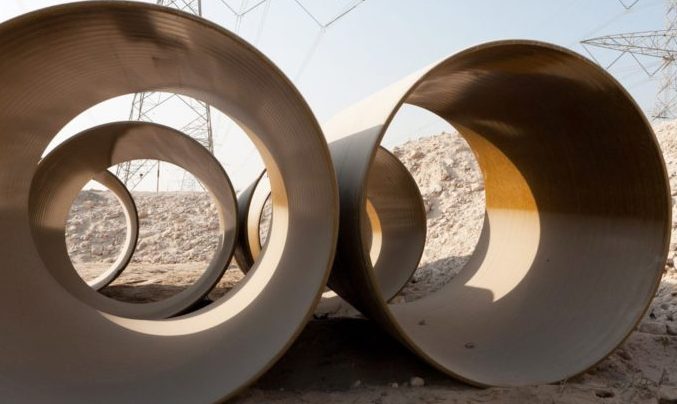March 26, 2021
 A major economic problem of the regime’s own making is that it has ranked job creation as its most important challenge a not unreasonable decision given how many Iranians are jobless and how important job creation rates with the average citizen.
A major economic problem of the regime’s own making is that it has ranked job creation as its most important challenge a not unreasonable decision given how many Iranians are jobless and how important job creation rates with the average citizen.
But the Islamic Republic has decided to create jobs by building huge factories that gobble up water all around the water-starved interior of the country.
Since there isn’t enough water to grow crops, supply the public’s needs AND provide for those factories, the regime has hit a brick wall. Now, it is trying to solve the problem by piping water deep into the interior of the country at huge expense.
Some of those factories just aren’t getting built because the water supply isn’t there yet. In other words, there is a shortage of both water and jobs.
Take the plan to build a petrochemical plant near Firuzabad in Fars province. It had everything usually needed to get a project off the ground: approval from the nation’s top authority, funding from the Pasdaran; and plentiful gas feedstock nearby.
But a decade since the start of construction, work at the site is only 10 percent complete because there isn’t enough water available to keep the facility cool.
“In early project studies, there were some mistakes about the amount of water the plant would need,” Hamid-Reza Soleyman-nejad, one of the plant’s project managers, told Reuters. “They found the plant needs a lot of water. But the region could not provide that.”
At least a dozen petrochemical, fertilizer and refinery projects have been delayed due to water supply problems, according to a Reuters assessment.
The list was compiled by the news agency based on reports in state media, direct comments from project managers involved in several of the delayed plants, traders, and details published by some of the companies or major shareholders in the developments.
Reuters sought comment from investors or companies involved. Most did not respond to emailed requests, while two confirmed water shortages were a major issue. One denied there was any problem, although a trader with close links to the project flagged a lack of water supplies as a crucial factor.
“Many of these projects were proposed by lawmakers who were trying to create jobs in their constituencies. Unfortunately, the technical studies have been widely ignored,” said Reza Banimahd, a businessman in Tehran who has worked on refinery projects.
Oil refineries and other processing plants need water mainly for cooling. Producing a single gallon of gasoline requires 0.61–0.71 of a gallon of water. But diverting limited supplies away from farming carries political risks.
Drought and depleting water supplies have sparked unrest. Farmers in Iran’s central region protested in several cities in 2018 over water mismanagement, as rainfall dropped 25 percent below the average.
The plant in Firuzabad aimed to produce 1 million tons of ethylene a year. Based on figures for a similar capacity plant, that output would use more than 2 million tons of water a year.
The government, which worries about falling national groundwater levels, wanted the $500 million plant moved to the coast where desalinated water could easily be supplied. But local officials and a senior cleric objected and the project has stalled.
Azizollah Hashemi-zadeh, Firuzabad’s Friday prayer leader, said the project would bring prosperity and could not be moved.
“There is a problem with coordination between ministries over development plans,” said Kaveh Madani, onetime deputy director of the Environmental Protection Agency. He fled Iran when the opposition to what he was recommending grew too great. He is now a visiting professor at London’s Imperial College.
The delay in the Firuzabad plant has had harmful ripple effects, disrupting four other projects that aimed to use the facility’s output of ethylene, an ingredient used to make products such as polyester resins and adhesives. Those offtake plants would also have added to strains on the region’s scant water reserves.
“Delay is not a good word. After 12 years, we are practically facing a failed project,” said another project manager for the Firuzabad plant when contacted by Reuters.
Iran’s petrochemical plants have the capacity to make about 65 million tons of products a year, of which about 22.5 million tons is exported. The government aims to increase output to 91 million tons this year and 130 million tons in another three years.
The Social Security Investment Company, a state body with 200 subsidiaries and major energy investments, flagged problems facing the industry in a 2018 report including sanctions, “the drought and shortage of water.”
It said some projects “were not economically feasible as they were initiated to create jobs in unsuitable locations.”
In northeast Iran, the Khorasan Petrochemical Company has struggled to launch a fertilizer plant to produce 660,000 tons of urea, using gas as a feedstock.
“Water resources for the project have not been provided and remain unclear,” Tamin Petroleum and Petrochemical Investment Company (TAPPICO), a major shareholder, wrote on its website.
Agriculture, a major employer in Iran, accounts for about 92 percent of Iran’s water usage, with industry using 2 percent and homes consuming 6 percent. UN data indicate Iran is using 3.8 billion cubic meters of water a year more than is replaced, leading to a rapidly falling water table.






















